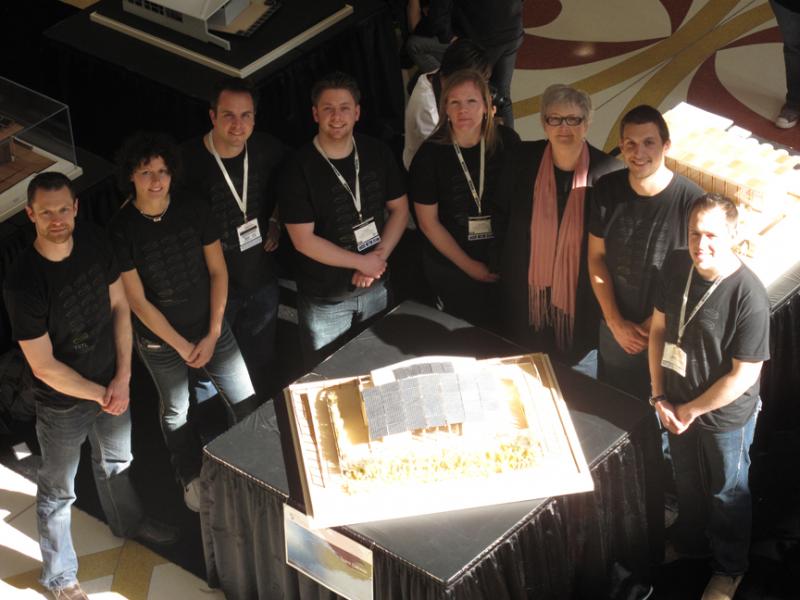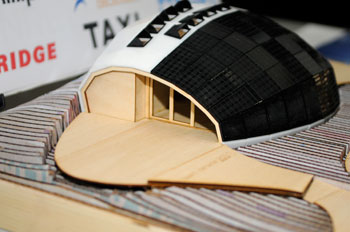Team Canada Returns to the Solar Decathlon With First Nation Values in Mind
Friday, June 3, 2011By April Saylor
Editor’s Note: This entry has been cross-posted from DOE’s Energy Blog.
In honor of the U.S. Department of Energy Solar Decathlon—which challenges 20 collegiate teams to design, build, and operate solar-powered houses that are cost-effective, energy-efficient, and attractive—we are profiling each of the 20 teams participating in the competition.
For our latest profile, we took a look at Team Canada’s design from the University of Calgary, which is making its second go at the competition after placing an impressive sixth out of 20 in Solar Decathlon 2009.

Members of Team Canada display a model of TRTL at the International Builders’ Show in Orlando, Florida. (Courtesy of Team Canada)
The team—which is made up of participants from the University of Calgary’s Faculty of Environmental Design, the Schulich School of Engineering, and the Haskayne School of Business—says its competitive edge emerges from an interdisciplinary and collaborative approach to design.
Team Canada’s house—which is known as TRTL (a Technological Residence that respects Traditional Living)—addresses critical issues in Aboriginal communities in Alberta, Canada. The TRTL design includes specific consideration for the context of Alberta’s First Nations communities. The 1000-ft2 house is intended for a young family, with two bedrooms and a large social space for cooking and eating. The house’s solar PV panels will produce as much energy as the house consumes over a year to ease rising energy costs in remote communities. The team used building materials that are extremely durable and highly resistant to mold and fire. In addition to these efficiency considerations, the house’s exterior and interior are references to the traditions and values of Treaty 7 Nations throughout Alberta.

A model of Team Canada’s TRTL (Courtesy of Riley Brandt)
The methods and technologies the team has used to design its house are meant to improve health, safety, and durability and offer numerous economic benefits. The team also says that the house’s form and function are driven by cultural norms and aesthetic preferences.
In December, TRTL was blessed by the former Chief of the Piikani Nation, Reggie Crowshoe, at a traditional ceremony, resulting in the project’s Blackfoot name: Spo’pi, which means turtle and translates directly to “lives on stilts” (a very fitting name given the team’s design strategy).
The team says that by “integrating the cutting-edge in green building and efficiency technologies within a framework of improved housing for First Nations, the TRTL concept provides a unique and compelling look into the future of sustainable design while celebrating the diverse foundations of Canadian history and culture.” The house is a response to cultural values and traditions and was designed and built in collaboration with Aboriginal individuals and organizations.
Visit Team Canada’s website for more information about the TRTL house.
April Saylor is an online content producer and contractor to the Department of Energy Office of Public Affairs.
Tags: Solar Decathlon, Solar Decathlon 2011, Teams
